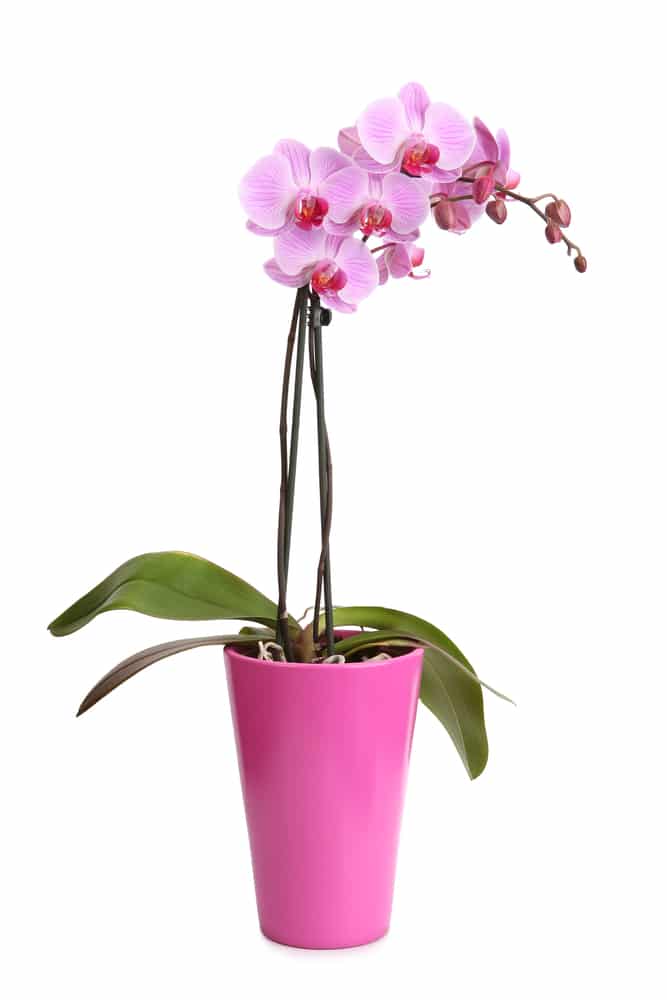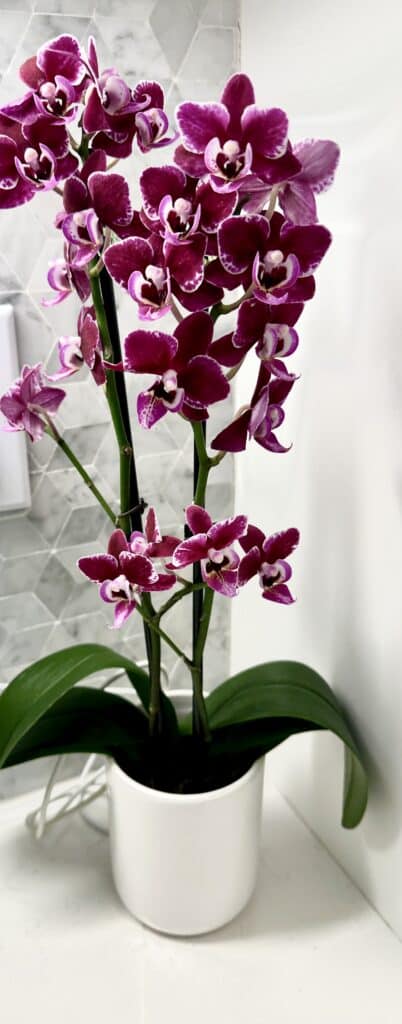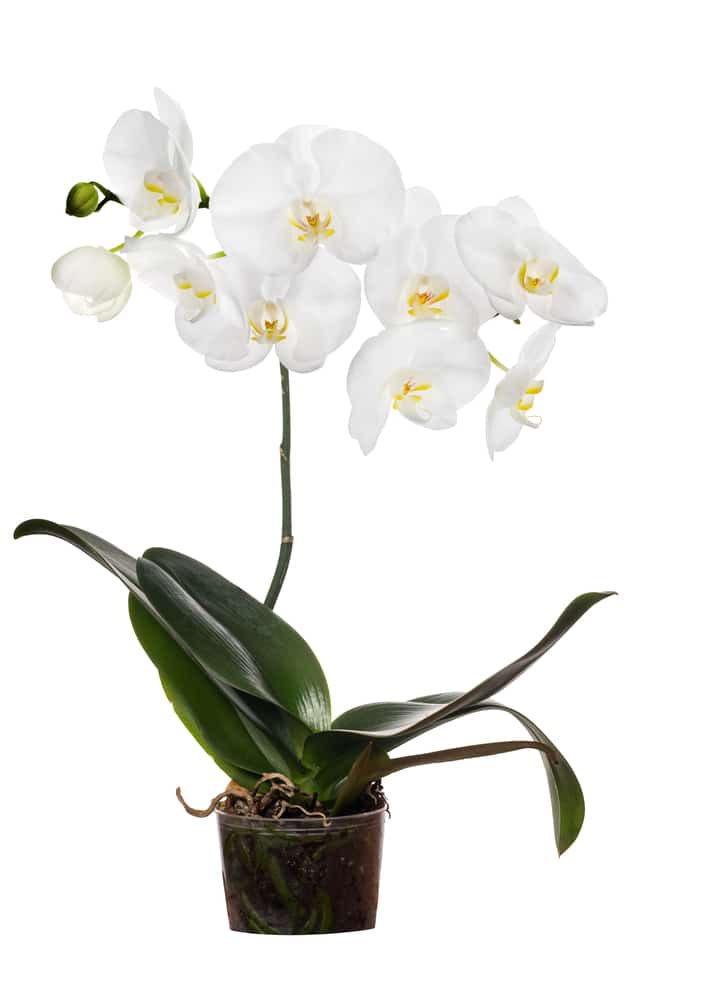How to Water Orchids: Tips for Beautiful Blooms
Watering orchids the correct way is crucial to their survival. Not only that, it helps keep your orchids looking beautiful.

Unlike typical houseplants, orchids have unique requirements that make their care a bit more challenging.
They need just the right amount of moisture to avoid issues like root rot or dehydration.
Understanding the watering needs of your specific orchid species is essential.
As orchids are usually epiphytic, which means they grow on other plants and not in soil, their roots require both water and air.
Overwatering can cause severe damage to plants, so it’s important to avoid this common mistake.

By mastering the right watering technique, you can create the ideal environment for your orchid to produce its stunning blooms.
Knowing when to water, how much to water, and which method to use is crucial.
You should focus on your orchid’s potting medium, the pot itself, and the surrounding environment to guide your watering routine.
Follow a schedule that mimics the orchid’s natural habitat, and adjust when needed to accommodate seasonal changes and indoor heating or cooling effects.
Understanding Orchid Watering Requirements
Properly watering orchids is essential for their health, and it’s not as complicated as it may seem.
The type of orchid, environmental factors, and potting medium all play a role in determining their needs.
- Epiphytic Orchids usually grow on trees and are often cultivated in well-draining media such as bark. They require thorough watering only when the medium is dry to the touch.
- Terrestrial orchids grow in the ground and prefer consistently moist soil compared to epiphytic orchids.
To make sure that you are watering your orchids correctly, follow these basic steps:
- Check the Moisture Level: Before watering, check if the soil is moist. If it is, wait a day or two before watering again.
- Water Thoroughly: Ensure the roots are fully saturated until water runs out the bottom of the pot.
- Avoid Water Logging: Ensure proper drainage to prevent root rot, as orchids don’t like sitting in water.
Please keep in mind that watering frequency for orchids is affected by several factors:
Pot Size: Smaller pots dry out faster.
- Season: During their growing season, usually in the spring and summer, plants may require more water.
- Climate: Orchids that are grown in arid climates require frequent watering.
- Indoor Conditions: Indoor heating and air conditioning can reduce humidity, which affects how often you need to water your plants.
It’s important to avoid using cold water when watering your orchids, as it can be harmful.
Instead, use room-temperature water. If you’re unsure about tap water quality, consider using rainwater or filtered water.

Types of Orchids and Their Watering Needs
Orchids need specific watering to stay healthy. Tailor your approach to the type of orchid to ensure it gets the right amount of hydration.
Phalaenopsis Orchids
Weekly watering is key for Phalaenopsis or moth orchids. Make sure the potting media dries out completely before the next watering.
This will also prevent overwatering and the problems that arise from it.
- Watering Frequency: Once a week
- Water Amount: Make sure to add enough water to the potting media so that it becomes thoroughly moistened, but be careful not to add too much. Allow any excess moisture to drain out of the potting container.
Cattleya Orchids
Cattleya orchids require less frequent watering and do best with a thorough watering every 7 to 10 days in a drier environment.
It’s crucial to wait until the potting mix is nearly dry before re-watering.
Watering Frequency: Every 7 to 10 days
- Water Amount: “Ensure that the medium is fully saturated.”
Dendrobium Orchids
Dendrobiums prefer mildly moist soil and should be watered once a week during the growing season and less frequently during the winter.
- Watering Frequency: Weekly in growing season, less often in winter
- Water Amount: Ensure moderate watering to avoid waterlogging
Please remember to adjust the watering schedule of your orchid plants based on the temperature, humidity, and the specific needs of each plant.
When to Water Orchids
Ensuring your orchids thrive requires watering them at the right time. Incorrect watering can cause root rot or dehydration.

Seasonal Watering Guide
Spring and Summer:
- Frequency: Water once a week
- Reason: Orchids typically grow more during these seasons, requiring more water.
Fall and Winter:
- Frequency: Water every other week
- Reason: Growth slows down; less water is necessary.
Signs Your Orchid Needs Water
Weight:
- Light Pot: Indicates the medium is dry and needs water.
- Heavy Pot: Suggests adequate moisture is present.
Appearance:
- Wrinkled Leaves: Often a sign of dehydration.
- Green and Plump Leaves: Show that the plant is well-hydrated.
How to Water Orchids
Orchids require specific watering methods to thrive, and understanding the right technique and water quality is crucial for their health.

Watering Techniques
- Frequency: Water your orchids once a week; however, some species may require more frequent watering during the growing season and less when dormant.
- Method: Use the ‘soak and dry’ method. Briefly soak the orchid pot in water to allow roots to absorb moisture, then let it drain.
Water Quality and Temperature
- Quality: Using filtered or rainwater instead of tap water for orchids is better. Tap water might contain minerals and chlorine that can be harmful over time.
- Temperature: Using lukewarm water when watering plants is important to avoid shocking or damaging the roots. A temperature that is comfortable to touch, around room temperature, is ideal.
Common Watering Mistakes to Avoid
- Overwatering: Orchids do not require frequent watering like other indoor plants. Water only when the potting medium is dry.
- Using Tap Water: For best results with orchids, it is recommended to use filtered or rainwater.
- Incorrect Water Temperature: It’s best to use lukewarm water when watering plants because cold water can shock the roots and cause damage over time.
Problems Around Watering
Inconsistent Watering Roots cannot adjust to unpredictable watering schedules. It’s important to establish a regular routine for watering your plants.
Poor Drainage To prevent your plant roots from rotting due to excess water, ensure the pots you use have drainage holes. Also, use a well-draining growing medium in your pots. This will help ensure that your plants get the water they need to thrive without becoming waterlogged.
Allowing Water to Sit: After watering, gently shake off any excess water left in the crown or between leaves to prevent rot.
Remember that your orchid’s watering needs are influenced by its environment, so monitoring conditions such as temperature and humidity is important to guide your watering schedule.
Additional Orchid Care Tips
Below, you will find some helpful advice on how to maintain and care for your orchid with regard to humidity, fertilization, and repotting. These tips will help ensure that your orchid stays healthy and continues to thrive.
Humidity and Air Circulation
Orchids need a specific humidity level, usually between 40% and 70%. To keep this level, use a humidity tray or put a saucer with pebbles filled with water under the pot.
Good air circulation can prevent disease and rot. A gentle fan or an open window can provide enough airflow.
Fertilizing Your Orchid
Orchids should be fertilized with a balanced, water-soluble fertilizer at half strength every other week during the growing season. During the dormant period, reduce fertilizing to once a month.
Here’s a simple guide:
Active Growth Period: Every other week with a balanced, water-soluble fertilizer at half-strength
Dormant Period: Once a month with a balanced, water-soluble fertilizer at half strength)
Repotting and Media
It’s recommended to repot your orchid every two to three years, or whenever the potting media starts to break down.
When selecting a new pot, choose one that is only slightly larger than the current one because orchids like a snug fit. The media should provide enough drainage and aeration to ensure proper Growth.
Some suitable materials for orchid potting media include fir bark, sphagnum moss, and coconut husk chips.
Repotting Steps:
- Remove the orchid from its pot
- Trim away any dead roots, taking care not to damage healthy tissue.
- Place the orchid in the new pot with fresh media and press gently to stabilize it.

Troubleshooting Watering Issues
When your orchid is showing signs of distress, it might be related to watering. Use this guide to identify common watering problems and how to fix them.
Overwatering: Yellowing leaves or a mushy base indicates overwatering
- Solution: Allow the potting mix to dry out more between waterings. Ensure your pot has good drainage.
Underwatering: Wrinkled leaves or a parchment-like texture suggest your orchid needs more water.
- Solution: Soak the orchid pot in water for a few minutes, then drain thoroughly. Increase watering frequency slightly.
Improper Watering Technique:
- Too Harsh: Watering with a strong jet can disturb the roots.
- Use a watering can with a long spout to gently water the base of the plant.
- Uneven Watering:Ensure water reaches all parts of the potting mix, not just one side.
Salt Buildup: If the tips of your orchid’s leaves are browning, this may be due to salts from the water or fertilizer.
- Solution: Flush the potting mix with water every few weeks to remove excess salts. Use filtered or rainwater if possible.
Quality of Water: Some orchids can be sensitive to the presence of chlorine and other chemicals that are commonly found in tap water.
Try to use filtered water to avoid issues.
If you can’t use filtered, you can leave your tap water to sit out overnight to let the chemicals evaporate before watering your orchids.
- Solution: Use rainwater or distilled water for your orchids if your plant reacts poorly to tap water.
Each orchid is unique, so monitoring your plant’s appearance and adjusting watering habits is important. If issues persist, seek advice from a local orchid expert or society.
Sustainable Practices
You can save yourself a lot of time and even water by using the sustainable tips below:
Monitor the Moisture:
- Feel the top inch of soil; water only when it’s dry to the touch.
- Use a moisture meter to determine if your orchid truly needs watering.
Water in the Morning:
- This reduces evaporation and gives plants time to absorb water during the day.
Mulch it Up:
- Add bark mulch on top of the potting medium around your orchids, as this helps to retain moisture for a longer period of time
Choose the Right Pots:
- Try using clay or terra cotta pots because of their material: they’re porous which means they promote good air flow, helping soil to dry evenly.
- Ensure pots have drainage holes to prevent overwatering.
Install a Rain Barrel:
- Collect rainwater to water your orchids.
- It’s a free and eco-friendly source of water.
Adjust Seasonally:
- Orchids need less water in cooler months.
- Reduce your watering schedule accordingly.
Create a Watering Schedule:
- Regular, calculated watering is more efficient than sporadic, heavy watering.
By following these steps, you’ll save water and care for your orchids sustainably.